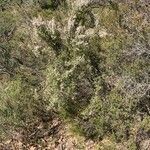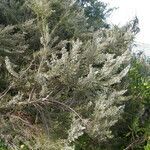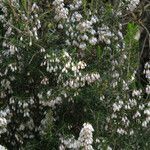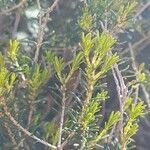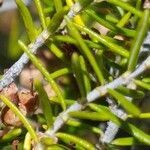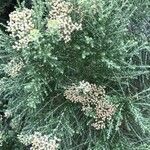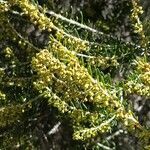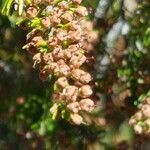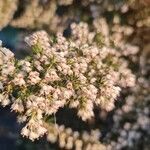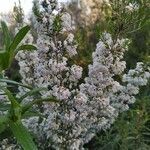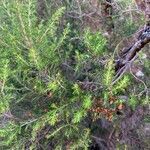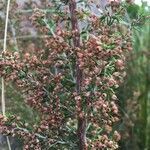Shrub or small tree to c. 5 m high. Shoots densely hairy or puberulent with copious echinate hairs, especially on young main shoots, occasionally hairs almost simple and very short. Lvs in whorls of 3-4, 3-7 mm long; margins revolute, contiguous and entirely concealing undersurface; apparent or false margin sometimes with hairs giving a serrulate appearance, otherwise lf glabrous; petiole very short. Fls in lateral racemes; racemes often densely arranged so appearing as a terminal panicle. Pedicels 2-3 mm long, glabrous. Bracteoles c. 1 mm long, linear to lanceolate, whitish, inserted on lower 1/2 of pedicel, not reaching calyx, ciliate. Calyx 1-2 mm long, whitish; lobes ovate, ciliolate, obtuse, 2-3× length of tube. Corolla 2.5-4 mm long, urceolate-campanulate, white, glabrous; lobes c. 1 mm long, erect, very broadly ovate. Stamens included; anthers c. 1 mm long, rose or crimson; awns short, echinate or plumose. Style exserted; stigma broad-capitate. Capsule c. 2 mm long, ± broad-oblong, glabrous.
An upright evergreen shrub. It grows 1-4 m tall. The leaves are dark green and needl-like. The flowers are small and bell-shaped. They have a smell like honey.
